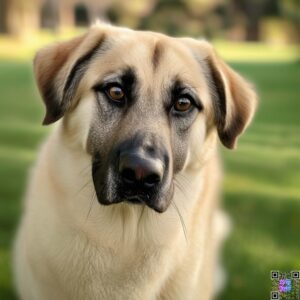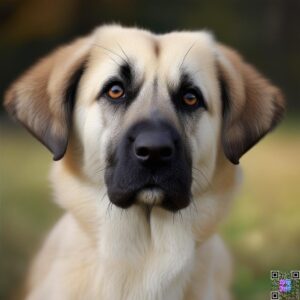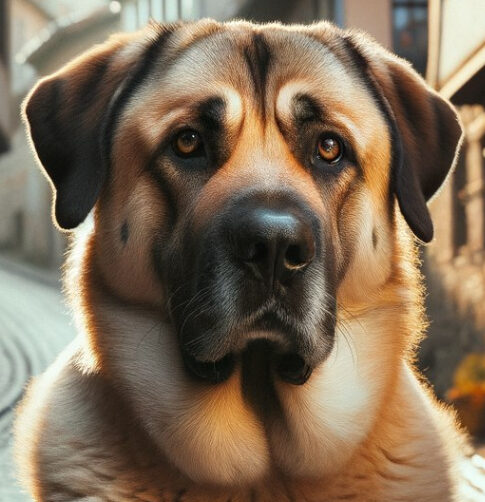Introduction
The miniature Anatolian Shepherd is a captivating breed that has captured the hearts of dog lovers around the world. Known for its loyalty, intelligence, and protective nature, this breed is a smaller version of the traditional Anatolian Shepherd, which has been a guardian of livestock for centuries. In this article, we will explore the history, characteristics, temperament, care, and training of the miniature Anatolian Shepherd, providing you with a comprehensive understanding of this remarkable dog.
Miniature Anatolian Shepherd: A Unique Breed The miniature Anatolian Shepherd is not just a smaller version of its larger counterpart; it possesses unique traits that make it a distinct breed. These dogs are known for their strong guarding instincts, which are a result of their heritage as livestock protectors. The breed’s compact size makes them suitable for various living situations, including apartments, while still retaining the protective nature of the Anatolian Shepherd. Their loyalty is unmatched, and they form strong bonds with their families. This breed is not just a pet; it is a devoted companion that will stand by your side through thick and thin. The miniature Anatolian Shepherd is an ideal choice for those looking for a loyal and protective dog that can adapt to different living environments.
History and Origin Ancient Roots in Turkey

The history of the miniature Anatolian Shepherd can be traced back to the Anatolian region of Turkey, where it was bred to protect livestock from predators such as wolves and bears. These dogs were essential for the survival of farmers, as they provided a reliable defense against threats. The breed’s lineage dates back thousands of years, with evidence suggesting that similar dogs existed as far back as 2000 B.C. Evolution of the Breed Over time, the Anatolian Shepherd evolved to adapt to various environmental conditions and the needs of farmers. The miniature version emerged as a result of selective breeding, aimed at producing a dog that could still fulfill its guarding duties while being more manageable in size. This evolution has allowed the breed to thrive in modern households, where space may be limited, while still retaining its essential characteristics.
Physical Characteristics
The Miniature Anatolian Shepherd is a smaller version of the traditional Anatolian Shepherd, maintaining many of the same physical characteristics but in a more compact form. While the breed isn’t officially recognized in some countries, the term “miniature” typically refers to Anatolian Shepherds that are bred to be smaller than the standard breed.
Size and Weight
The miniature Anatolian Shepherd typically weighs between 50 to 80 pounds and stands about 20 to 25 inches tall at the shoulder. This size makes them more suitable for families living in smaller homes or apartments, while still providing the strength and presence of a guardian breed. Their compact build allows them to move quickly and efficiently, making them effective protectors.
Coat Colors and Patterns
The coat of the miniature Anatolian Shepherd can vary widely in color, including shades of fawn, brindle, and white. Their thick, double coat provides insulation against cold weather and protection from the elements. Regular grooming is essential to keep their coat healthy and free from mats, especially during shedding seasons.
Distinctive Features
One of the most striking features of the miniature Anatolian Shepherd is its expressive face, characterized by a broad head and intelligent eyes. Their ears are typically medium-sized and may be cropped or left natural. The breed’s tail is often curled over the back when they are alert, adding to their majestic appearance.
Temperament and Behavior Loyalty and Protectiveness
The miniature Anatolian Shepherd is renowned for its loyalty and protective instincts. These dogs are fiercely devoted to their families and will go to great lengths to ensure their safety. This protective nature makes them excellent watchdogs, as they are naturally suspicious of strangers and will alert their owners to any potential threats. Independence and Intelligence This breed is known for its independence and intelligence, traits that were essential for their original role as livestock guardians. They are capable of making decisions on their own, which can sometimes lead to challenges in training. However, with consistent and positive reinforcement, they can learn commands and behaviors effectively.
Socialization Needs
Early socialization is crucial for the miniature Anatolian Shepherd. Exposing them to various environments, people, and other animals will help them develop into well-rounded companions. Without proper socialization, they may become overly protective or wary of unfamiliar situations.
Care and Maintenance Grooming Requirements
The grooming needs of the miniature Anatolian Shepherd are relatively straightforward. Their thick coat requires regular brushing to remove loose fur and prevent matting. During shedding seasons, more frequent brushing may be necessary to manage the increased amount of hair. Bathing should be done as needed, typically once a month, to keep their coat clean and healthy.
Exercise Needs
While the miniature Anatolian Shepherd does not require excessive exercise, they do need regular physical activity to stay healthy and happy. Daily walks, playtime in a secure yard, and interactive games will help keep them mentally and physically stimulated. Aim for at least an hour of exercise each day to meet their needs.
Diet and Nutrition
A balanced diet is essential for the health of the miniature Anatolian Shepherd. High-quality dog food, appropriate for their age and size, should be provided to ensure they receive the necessary nutrients. Regular feeding schedules and portion control will help maintain a healthy weight, as obesity can lead to various health issues.
Ancient Roots of the Anatolian Shepherd
The history of the Anatolian Shepherd dates back thousands of years. Originating from Turkey, these dogs were bred by nomadic tribes to protect livestock from predators like wolves and bears. Their large size and formidable presence made them effective guardians in harsh environments.
Development of the Miniature Variant
As urban living became more common, there was a demand for smaller breeds that could serve similar purposes without requiring as much space. Breeders began developing the Miniature Anatolian Shepherd by selectively breeding smaller individuals from the traditional breed while maintaining their essential characteristics. This adaptation has allowed them to thrive as both working dogs and family pets.
Physical Characteristics
Health Considerations
-
Common Health Issues
Like all breeds, Miniature Anatolian Shepherds are prone to certain health issues such as hip dysplasia, eye problems, and allergies. Regular veterinary check-ups can help catch these issues early.
-
Lifespan and Care Requirements
The average lifespan of a Miniature Anatolian Shepherd ranges from 12 to 15 years. Providing them with a balanced diet, regular exercise, and routine veterinary care contributes significantly to their overall health.
Living with a Miniature Anatolian Shepherd
-
Ideal Living Conditions
These dogs thrive in environments where they have space to roam but can adapt well to apartment living if given sufficient exercise. A secure yard is ideal for playtime while keeping them safe from potential threats.
-
Exercise and Activity Needs
Regular exercise is essential for maintaining their physical health. Daily walks combined with playtime will keep them happy and healthy. They enjoy activities that challenge them mentally as well as physically.
-
Nutrition and Diet
A balanced diet tailored to their age, weight, and activity level is crucial. High-quality dog food that meets all nutritional requirements will support their overall health.
Grooming and Maintenance
-
Grooming Frequency and Techniques
Grooming needs for the Miniature Anatolian Shepherd are relatively low due to their short coat. Regular brushing helps minimize shedding while keeping their coat healthy.
-
Bathing and Coat Care
Bathing should be done as needed—typically every few months or when they get particularly dirty. Using dog-specific shampoos ensures that their skin remains healthy without stripping away natural oils.
Training the Miniature Anatolian Shepherd Basic Obedience Training
Training is an essential part of raising a miniature Anatolian Shepherd. Basic obedience commands such as sit, stay, and come should be taught early on. Positive reinforcement methods, such as treats and praise, work best with this breed, as they respond well to encouragement rather than harsh discipline.Advanced Training TechniquesOnce basic commands are mastered, advanced training techniques can be introduced. Activities such as agility training, scent work, or even herding exercises can provide mental stimulation and strengthen the bond between the dog and its owner. Engaging in these activities will help channel their natural instincts in a positive way.
Living with a Miniature Anatolian Shepherd Ideal Living Conditions
The miniature Anatolian Shepherd thrives in environments where they have space to roam and explore. A securely fenced yard is ideal, as it allows them to exercise and fulfill their guarding instincts. While they can adapt to apartment living, it is essential to provide regular outdoor activities to meet their exercise needs.
Compatibility with Families
This breed is known for its loyalty and protective nature, making it an excellent choice for families. They are generally good with children, especially when raised together. However, supervision is essential, as their protective instincts can lead to overzealous behavior if they perceive a threat.
Health Considerations Common Health Issues
Like all breeds, the miniature Anatolian Shepherd may be prone to certain health issues. Common concerns include hip dysplasia, elbow dysplasia, and hypothyroidism. Regular veterinary check-ups and a healthy lifestyle can help mitigate these risks and ensure a long, healthy life.
Preventative Care
Preventative care is crucial for maintaining the health of your miniature Anatolian Shepherd. Regular vaccinations, parasite control, and dental care should be part of your routine. Additionally, keeping an eye on their weight and adjusting their diet as needed will help prevent obesity-related health problems.

Frequently Asked Questions
1- What is the lifespan of a miniature Anatolian Shepherd?
The lifespan of a miniature Anatolian Shepherd is typically between 11 to 13 years, depending on their overall health and care.
2- Are miniature Anatolian Shepherds good with children?
Yes, they are generally good with children, especially when raised together. Supervision is important to ensure safe interactions.
3- Do miniature Anatolian Shepherds require a lot of exercise?
While they do not require excessive exercise, they need regular physical activity to stay healthy and happy. Aim for at least an hour of exercise each day.
4- How do I train a miniature Anatolian Shepherd?
Training should begin with basic obedience commands and can progress to advanced techniques using positive reinforcement methods.
5- What are common health issues in miniature Anatolian Shepherds?
Common health issues include hip dysplasia, elbow dysplasia, and hypothyroidism. Regular veterinary care can help manage these risks.
6- Can miniature Anatolian Shepherds live in apartments?
They can adapt to apartment living, but it is essential to provide regular outdoor activities and exercise to meet their needs.
Conclusion
The miniature Anatolian Shepherd is a remarkable breed that combines loyalty, intelligence, and protective instincts in a compact size. With a rich history and unique characteristics, these dogs make excellent companions for families and individuals alike. By understanding their needs for care, training, and socialization, you can ensure a fulfilling life for both you and your miniature Anatolian Shepherd. Whether you’re looking for a devoted guardian or a loving family pet, this breed is sure to bring joy and companionship to your life. Yes! They can adapt well if given enough exercise outside daily. This article aims to provide comprehensive insights into The Miniature Anatolian Shepherd while ensuring readability through engaging content structure that caters to both SEO requirements and user experience.

